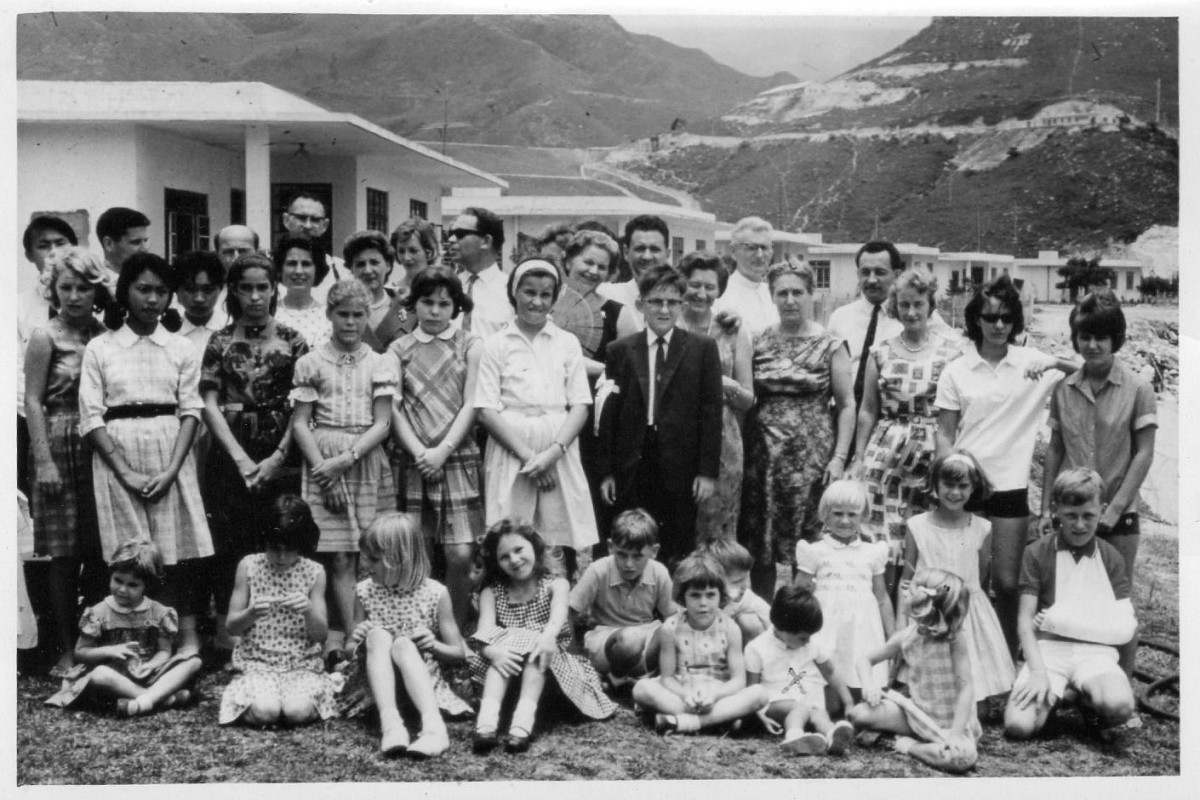 French engineers needed a school for their children.
French engineers needed a school for their children.Today it is an international school with four campuses and more than 2,500 students. But without the Shek Pik dam, French International School might not even exist.
The year was 1963, and when the school opened, it welcomed just 11 secondary students. They wouldn't even fill a single classroom today.
François Drémeaux, a history teacher at the school and also an expert on Hong Kong-France relations, wrote about its history in Blackboard in the Fragrant Harbour. French people had settled in the former British colony since the 19th century. But one of the few things they were missing was a French school. It took the Shek Pik dam to provide the spark. Alain Bry, France's then vice-consul to the city, says in the book that during the early months of 1962, Hong Kong's French community tripled in size as engineers and technicians arrived to work on the dam.
Before the school, French families had limited options when it came to schooling. They could send their children to board in schools in French colonies in Southeast Asia, or hire a private tutor. Otherwise, it would mean an English school in Hong Kong, with French lessons on the side.
Parents and the consulate worked together to start the school in 1963. The first lessons were given at the old Hang Seng Bank building on Des Voeux Road.
The French consulate was in the same building, which was convenient for Bry. The vice-consul had to teach history and geography to secondary students, "as and when required", he told Drémeaux.
For the first 10 years, the school didn't have any professional teachers.
"Teachers were from all walks of life ... everyone was helping," says Drémeaux. This meant that early students received lessons from some interesting figures.
Jean-Pierre Angrémy, better known as novelist Pierre-Jean Rémy, was a young diplomat posted to Hong Kong in the early 1960s. He spoke passionately to students about philosophers Rousseau and Voltaire, and was elected to the French Academy in 1988.
International students were welcomed from the start. André Chen, son of a Japanese-Taiwanese father and a Vietnamese mother, was one of the very first students at the school.
At the time, the school used a curriculum provided by France's national centre for distance learning, known as CNED today.
Lessons were planned in France and sent to students. Homework was sent back to France to be marked, which caused all sorts of problems. "When homework came back, we had long forgotten what it was about most of the time," recalls Chen.
Many of the early students at the school went on to live globe-trotting lives. "I think this is one particular thing we have in the French International School network around the world," says Drémeaux. "It helps [students] to be open-minded."
Having spent 16 months on the book, Drémeaux says his favourite period in the school's history was between 1975 and 1982. He referred to it as a time of "bricolage". This meant the school had to take on a makeshift spirit.
Because the school didn't have a proper sports curriculum until 1975, the consulate's military attaché took students for a run from time to time.
When Danielle Bonnevay arrived as a sports teacher, she tried to build up a sporting curriculum while dealing with a lack of facilities.
With no running track or playing fields, students would run in the woods around the school and play football on the streets.
When the French community expanded further, the school doubled in size between 1975 and 1980 to reach 200 students. It gradually moved away from its family atmosphere and towards a more professional approach.
Its Jardine campus was built in 1984, around the time the Sino-British Joint Declaration was signed and the future of Hong Kong was uncertain. And the very first stone of the Blue Pool campus was laid on the day of the handover in 1997.
Drémeaux thinks this was a very clever political gesture. "Whatever will be your future with China," he says, "French people, [will be] here and building a school for the French community."
